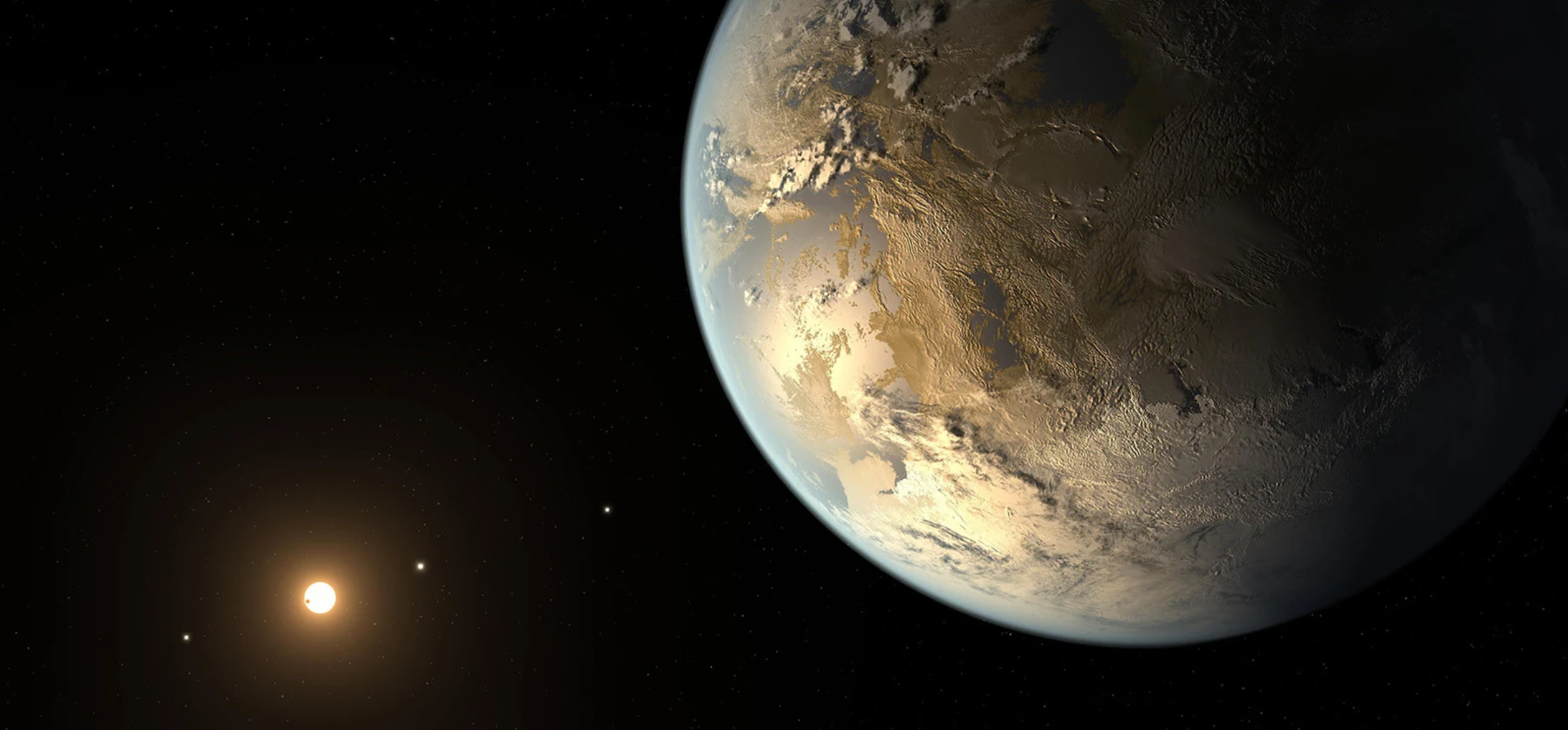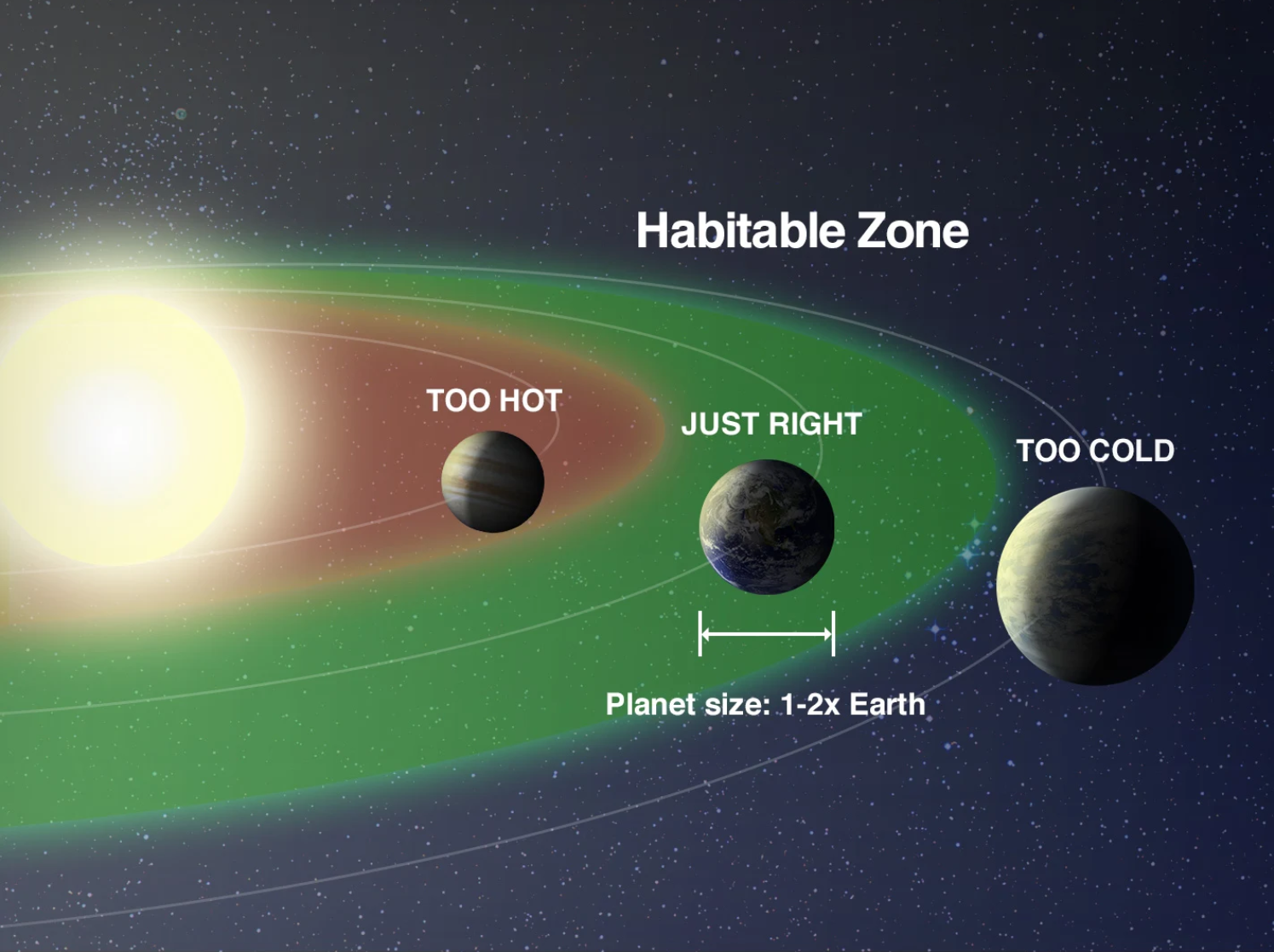EXOPLANETS
Page Contents:
1. What is an Exoplanet? 2. How do we detect Exoplanets? 3. What can we learn from transits?1. What is an Exoplanet?
Exoplanets are planets, much like the eight that we are familiar with in our solar system. Our planets are defined by the following qualities: they orbit a star (our Sun), they are massive enough to have been rounded by gravity, they are not massive enough for thermonuclear fusion to occur in their core (otherwise they would be stars), and they have cleared their orbit of other massive objects (except for any moons that might orbit them).
What is the main difference between our planets and exoplanets?
Exoplanets are located far outside our Solar System, and are mostly found orbiting distant stars many light years away. So far, more than 4,000 exoplanets have been confirmed, with many more being confirmed every year. These planets have been found orbiting over 3,000 different stars, which means that many stars host more than one exoplanet, just as our Sun does. For example, the exciting planetary system discovered around the star TRAPPIST-1 includes 7 exoplanets!
What do exoplanets look like?
![NASA Credit: This artist's concept shows what the TRAPPIST-1 planetary system may look like, based on available data about the planets' diameters, masses and distances from the host star, as of February 2018. Credit: NASA/JPL-Caltech]](DIY_common/images/exoplanets_page/2981_PIA22093-NASA.jpg)
We typically categorize exoplanets in the same way we do with our own planets. We have found terrestrial exoplanets that are small and rocky, much like Mercury, Venus, Earth, and Mars. And we have found gas giants like Jupiter, Saturn, Uranus, and Neptune. There are some exoplanets that don’t quite match anything we have in our solar system. For example, there is a type of terrestrial planet that we call “Super Earth,” because it is rocky like the Earth, but larger than any rocky planet found around our Sun. We have also found gas giants that orbit much closer to their star than any of the gas giants in our outer solar system. These so-called “Hot Jupiters” were a surprise when first discovered, since most astronomers initially assumed other solar systems would be like ours.
It’s hard to know precisely what an exoplanet looks like. Given how far away they are, and how dim they are compared to their bright host stars, it’s extremely difficult (but not impossible!) to get direct images of exoplanets. However, other detection methods can tell us quite a bit about the characteristics of each exoplanet.

Is there life on exoplanets?

This is one of the greatest debates about exoplanets, and a question that people have been asking about the Universe for centuries, perhaps longer. Earth is still the only planet that we know for a fact hosts life. However, we can use characteristics of Earth to help search for signs of life on exoplanets.
Of greatest interest to scientists looking for life are terrestrial exoplanets (like Earth) that orbit in the “Habitable Zone” around the star. This zone is neither too close to its star nor too far away, which would allow for just the right temperature on an exoplanet for liquid water to exist. With liquid water, life just might have had an environment to develop on this exoplanet as it did on Earth. Find out more about the search for life.
2. How do we detect Exoplanets?
Astronomers are actively using a number of methods, and a number of telescopes, to detect exoplanets. Learn more about these methods below.
Transit Method
The method that has produced the most confirmed exoplanets so far is known as the Transit Method. The Transit Method looks for periodic dips in the brightness of the star, which can indicate that an exoplanet is passing in front of the light from the star, as seen from the viewpoint of Earth. Of course, this method only works when planets pass directly between the star and Earth, and can fail to detect planets whose orbits occur at different angles.
The Transit Method is what you will be using in your own planet search on this website. As you use this method to generate a light curve graph from your data, you will also realize this method can tell you a whole lot about your planet. Specifically, you can use data from your light curves to determine how big the exoplanet is, how far it is from its host star, how fast it is moving, and the orientation of the exoplanet’s orbit from our perspective on Earth.
Other Methods

Other methods that have successfully identified exoplanets are: (1) gravitational lensing, (2) various “wobble” methods (which involve studying the spectrum or precise position of stars for signs of an exoplanet pulling the star in different directions), and (3) direct imaging (which is to say, taking an image of the exoplanet, but this is very hard to do and has only been successful with a handful of exoplanets). Find out more about the 5 main methods for detecting exoplanets!.
Telescopes are actively searching
There are a number of telescopes on the ground and in space that are actively searching for exoplanets using these methods. One of the most well-known is the Kepler Space Telescope, which launched in 2009 and during its extended lifetime through 2018 detected thousands of exoplanets using the Transit Method. NASA’s Transiting Exoplanet Satellite Survey launched in 2018 and is surveying the entire sky for planets smaller than Neptune that transit stars bright enough to enable follow-up spectroscopic observations by telescopes such as the James Webb Space Telescope.
Keep track of the new discoveries coming in every day.
- go to top -
3. What can we learn from transits?
When a planet passes in front of its star, it blocks some of the star’s light. You’ll look for the dimming of the star as this happens.
Incredibly, just from measurements of the star’s brightness, you’ll be able to not only detect the planet— you’ll also be able to tell:
- How big is the planet compared to its star?
- How fast does it move and how close to its star?
- Is the planet’s orbit tilted, as seen from Earth?
- What are the prospects of life on this planet?
There is a lot more to learn about exoplanets.
We hope your participation in DIY Planet Search leads you deeper into this exciting field of science. As you develop your skills in analyzing transit data from the MicroObservatory telescopes, you’ll be able to contribute to NASA’s Exoplanet Exploration program by publishing your data on the DIY Community page, and through our collaboration with NASA’s Exoplanet Watch program. Start observing now!